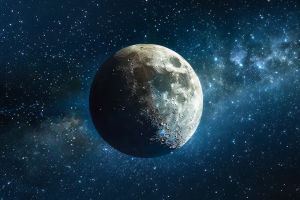In 1930, Clyde Tombaugh discovered Pluto, and it was classified as the ninth planet in our solar system for many years. However, Pluto’s status as a planet was challenged after other similar-sized objects in the Kuiper Belt were discovered.
In 2006, the International Astronomical Union (IAU) redefined the criteria for planets and downgraded Pluto to a dwarf planet. Despite this, Pluto remains one of the most intriguing celestial bodies, and we find ourselves continually fascinated by its unique characteristics.
Pluto's Physical Features
Pluto is the largest object in the Kuiper Belt, a region beyond Neptune filled with icy bodies. Despite being far from the Sun, it is still one of the most well-known celestial objects. Pluto’s mass is only about one-sixth that of Earth's Moon, and its volume is just one-third of the Moon's.
Pluto’s surface is composed mainly of rock and ice, with the possibility of a subsurface ocean beneath its icy shell. This makes Pluto similar to other icy bodies in the outer solar system but distinct because of its complex surface and atmosphere.
Pluto’s Orbit and Its Unique Characteristics
Pluto’s orbit is highly elliptical, meaning its distance from the Sun varies greatly. At its closest (perihelion), Pluto is 30 astronomical units (AU) from the Sun, while at its furthest point (aphelion), it is 49 AU away. This orbital path takes Pluto into Neptune's orbit occasionally, but thanks to a resonance between their orbits, the two will never collide. It takes Pluto about 248 years to complete one orbit around the Sun.
Pluto’s surface temperature is extremely low, ranging from -229°C to -218°C. The planet has a very thin atmosphere, mostly made up of nitrogen, methane, and carbon monoxide. Despite the cold, Pluto has shown evidence of geological activity, including cryovolcanism and mountain ranges.
The Moons of Pluto
Pluto has five known moons: Charon, Styx, Nix, Kerberos, and Hydra. Charon, the largest of these moons, is nearly half the size of Pluto itself, and the two bodies orbit a common center of mass that lies outside Pluto, leading some to consider them a binary system. However, the IAU still officially considers Charon as Pluto's moon.
Charon’s large size and close relationship with Pluto make it a fascinating object of study, and the interactions between the two bodies are quite unique compared to other planetary systems.
Pluto’s Demotion and Exploration
For decades, Pluto was considered the ninth planet in our solar system, but in 2006, it was reclassified as a dwarf planet by the IAU. This change in classification was due to the discovery of other similar-sized objects in the Kuiper Belt, which led to the conclusion that Pluto did not meet the criteria of a planet.
The demotion of Pluto sparked a lot of debate among astronomers and the public, but it also highlighted Pluto's uniqueness. In 2015, NASA’s New Horizons spacecraft made history as the first mission to fly by Pluto. During its flyby, New Horizons captured detailed images and data that revealed Pluto’s surface and atmosphere, uncovering features that were previously unknown, such as ice volcanoes and frozen nitrogen plains.
The Ongoing Mystery of Pluto
Pluto continues to captivate scientists and space enthusiasts alike. Despite its small size and distant location, Pluto offers insights into the outer reaches of the solar system. Its distant orbit, strange terrain, and intriguing moons make it a subject of ongoing study.
Moreover, the possibility of a subsurface ocean on Pluto could mean that life might exist in some form beneath its icy surface. This discovery opens up new avenues for research and deepens our understanding of how planets and moons in the outer solar system behave.
Pluto's Enduring Charm
Pluto may no longer be classified as the ninth planet, but it remains a symbol of the mysteries that lie beyond our immediate understanding of the solar system. From its strange orbit to its icy surface and active geology, Pluto has proven to be much more than just a distant rock in space.
As we continue to explore the farthest reaches of our solar system, Pluto will undoubtedly remain a source of fascination and discovery.
So, fellow Lykkers, what do you think? Does Pluto deserve to be called a planet again? Whatever the case, its fascinating features will continue to spark our curiosity for years to come!


